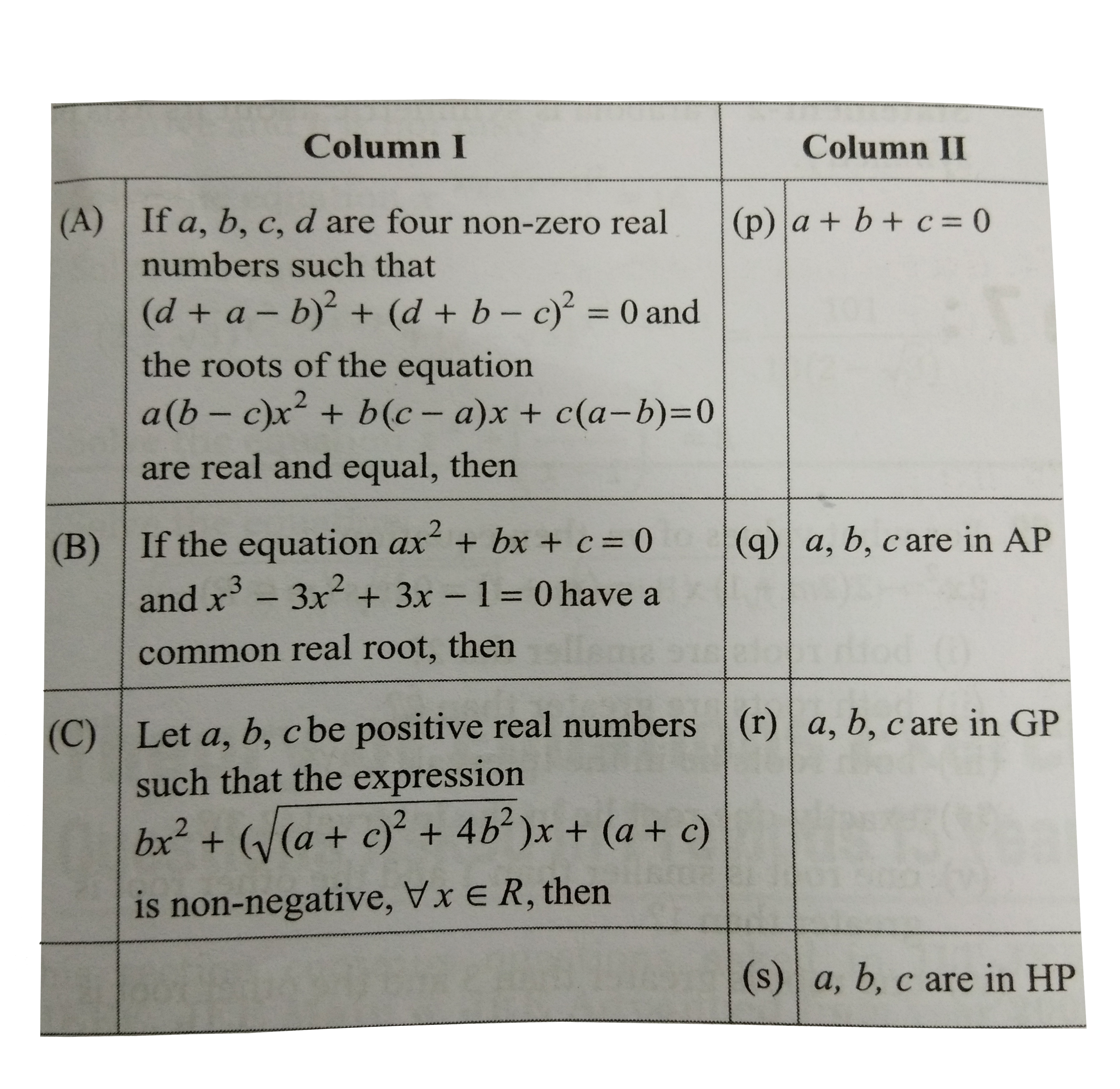The correct Answer is:(A)→(q,r,s),(B)→(p),(C)→(q)
A→(q,r,s),B→(p),C→(q)
(A)∵(d+a−b)2+(d+b−c)2=0
which is possible only when
d+a−b=0,d+b−c=0
⇒b−a=c−b
⇒2b=a+c
∴a,b and c are in AP ……….i
∵a(b−c)+b(c−a)+c(a−b)=0
∴x=1 is a root of
a(b−c)x2+b(c−a)x+c(a−b)=0........ii
Given roots[Eq (ii) ] are equal.
∴1×1=c(a−b)a(b−c)
⇒a(b−c)=c(a−b)
or b=2qca+c
∴a,b and c are in HP ............iii
From Eq. i and ii we get
a=b=c
∴a,b and c are in AP, GP and HP
(B)∵x3−3x2+3x−1=0
⇒(x−1)3=0
∴x=1,1,1
⇒ Common root x=1
∴a(1)2+b(1)+c=0
⇒a+b+c=0
(C)Given bx2+(√(a+c)2+4b2)x+(a+c)≥0
=∴D≤0
⇒(a+c)2+4b2−4b(a+c)≤0
⇒(a+c−2b)2≤0
or (a+c−2b)2=0
∴a+c=2b
Hence a, b and c are in AP.
Topper's Solved these Questions
- THEORY OF EQUATIONSBOOK - ARIHANT MATHSCHAPTER - THEORY OF EQUATIONSEXERCISE - Exercise (Statement I And Ii Type Questions)
7 Videos
- THEORY OF EQUATIONSBOOK - ARIHANT MATHSCHAPTER - THEORY OF EQUATIONSEXERCISE - Exercise (Subjective Type Questions)
24 Videos
- THEORY OF EQUATIONSBOOK - ARIHANT MATHSCHAPTER - THEORY OF EQUATIONSEXERCISE - Exercise (Matching Type Questions)
2 Videos
- THE STRAIGHT LINESBOOK - ARIHANT MATHSCHAPTER - THE STRAIGHT LINESEXERCISE - Exercise (Questions Asked In Previous 13 Years Exam)
18 Videos
- THREE DIMENSIONAL COORDINATE SYSTEMBOOK - ARIHANT MATHSCHAPTER - THREE DIMENSIONAL COORDINATE SYSTEMEXERCISE - Exercise (Questions Asked In Previous 13 Years Exam)
44 Videos
Similar Questions
Statement -1 If the equation (4p−3)x2+(4q−3)x+r=0 is satisfied by x=a,x=b nad x=c (where a,b,c are distinct) then p=q=34 and r=0
Statement -2 If the quadratic equation ax2+bx+c=0 has three distinct roots, then a, b and c are must be zero.
View SolutionFor what values o m the equation (1+m)x2−2(1+3m)x+(1+8m)=0 has (mεR)
(i) both roots are imaginary?
(ii) both roots are equal?
(iii) both roots are real and distinct?
(iv) both roots are positive?
(v) both roots are negative?
(vi) roots are opposite in sign?
(vii)roots are equal in magnitude but opposite in sign?
(viii) atleast one root is positive?
(iv) atleast one root is negative?
(x) roots are in the ratio 2:3?
View SolutionColumn I contains rational algebraic expressions and Column II contains possible integers which lie in their ragne. Match the entries of Column I with one or more entries of the elements of Column II.
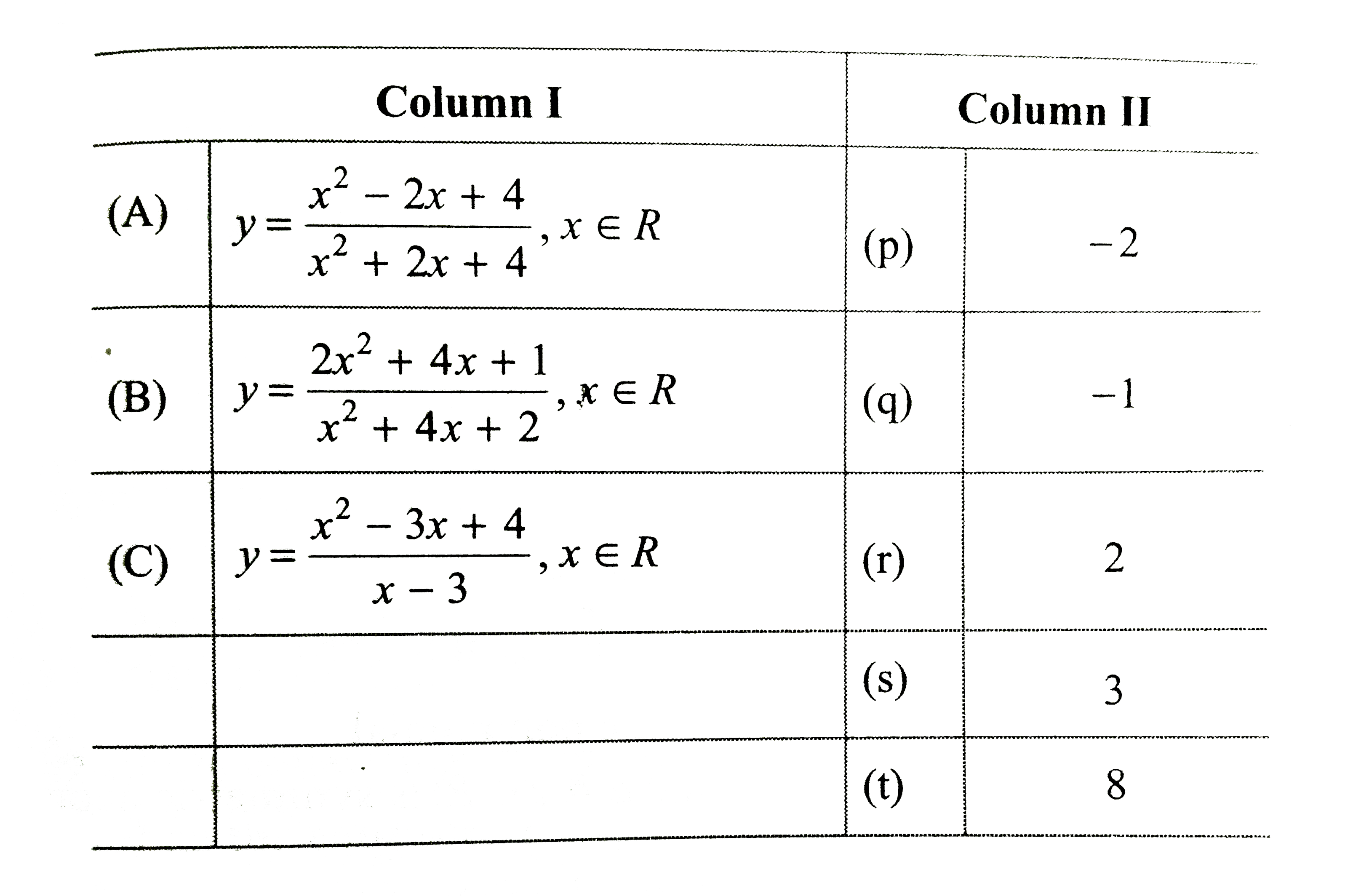
View SolutionThe lines parallel ot the x-axis and passing through the intersection of the lines ax+2by+3b=0andbx−2ay−3a=0 [where(a,b)≠(0,0)] is-
View SolutionConsider a pyramid OPQRS located in the first octant (x≥0,y≥0,z≥0) with O as origin and OP and OR along the X-axis and the Y-axis , respectively. The base OPQRS of the pyramid is a square with OP=3. The point S is directly above the mid point T of diagonal OQ such that TS=3. Then,
View SolutionHow many lines of symmetry does the above figure have ?
View SolutionWhich of the following are correct chain isomers of butane ? (i)
View SolutionDetermine the point of symmetry of a regular hexagon.
View SolutionDtermine the images of the following figure about the given line :
View SolutionMatch the following Column A to Column B
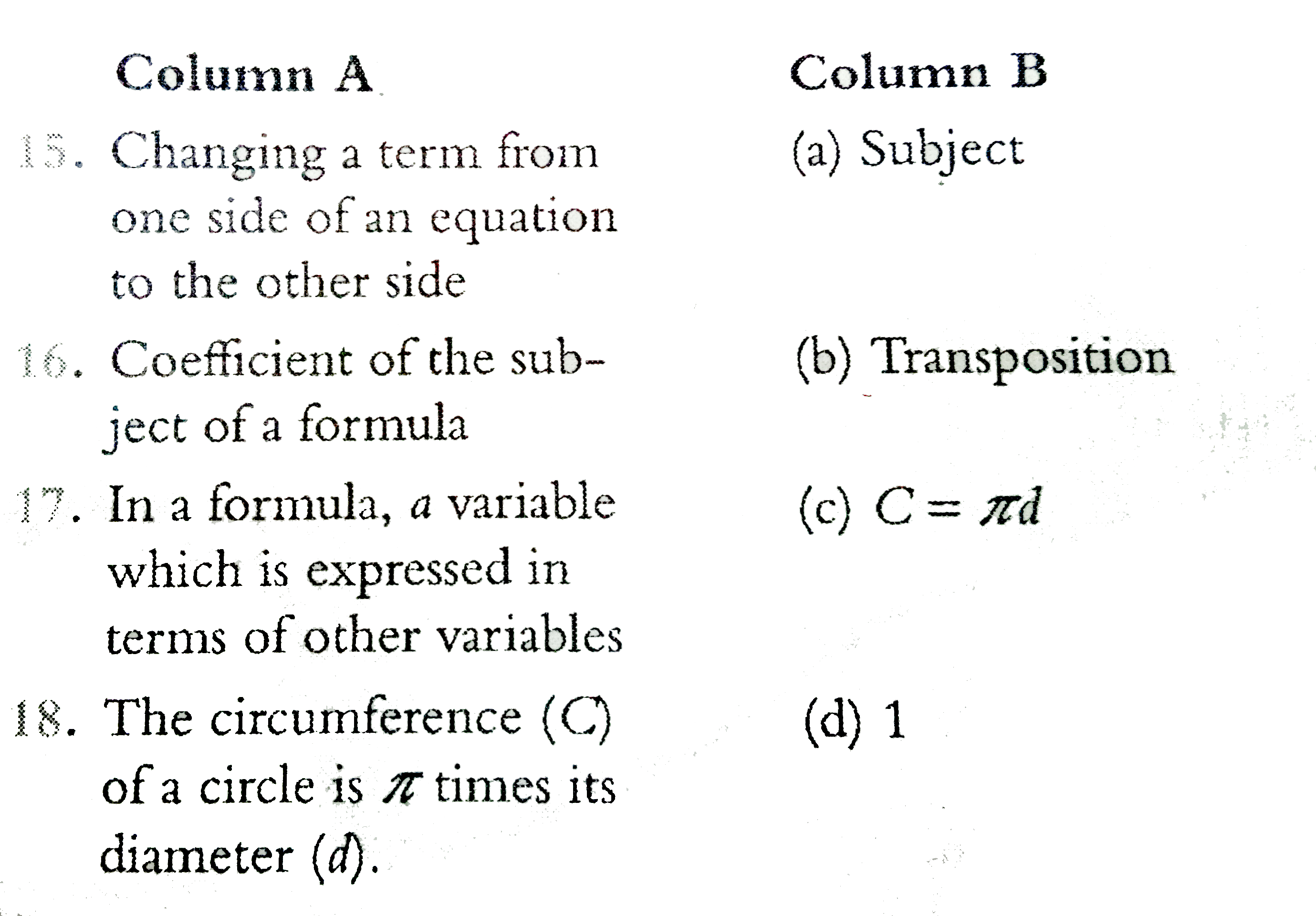
View SolutionMatch the following Column A to Column B
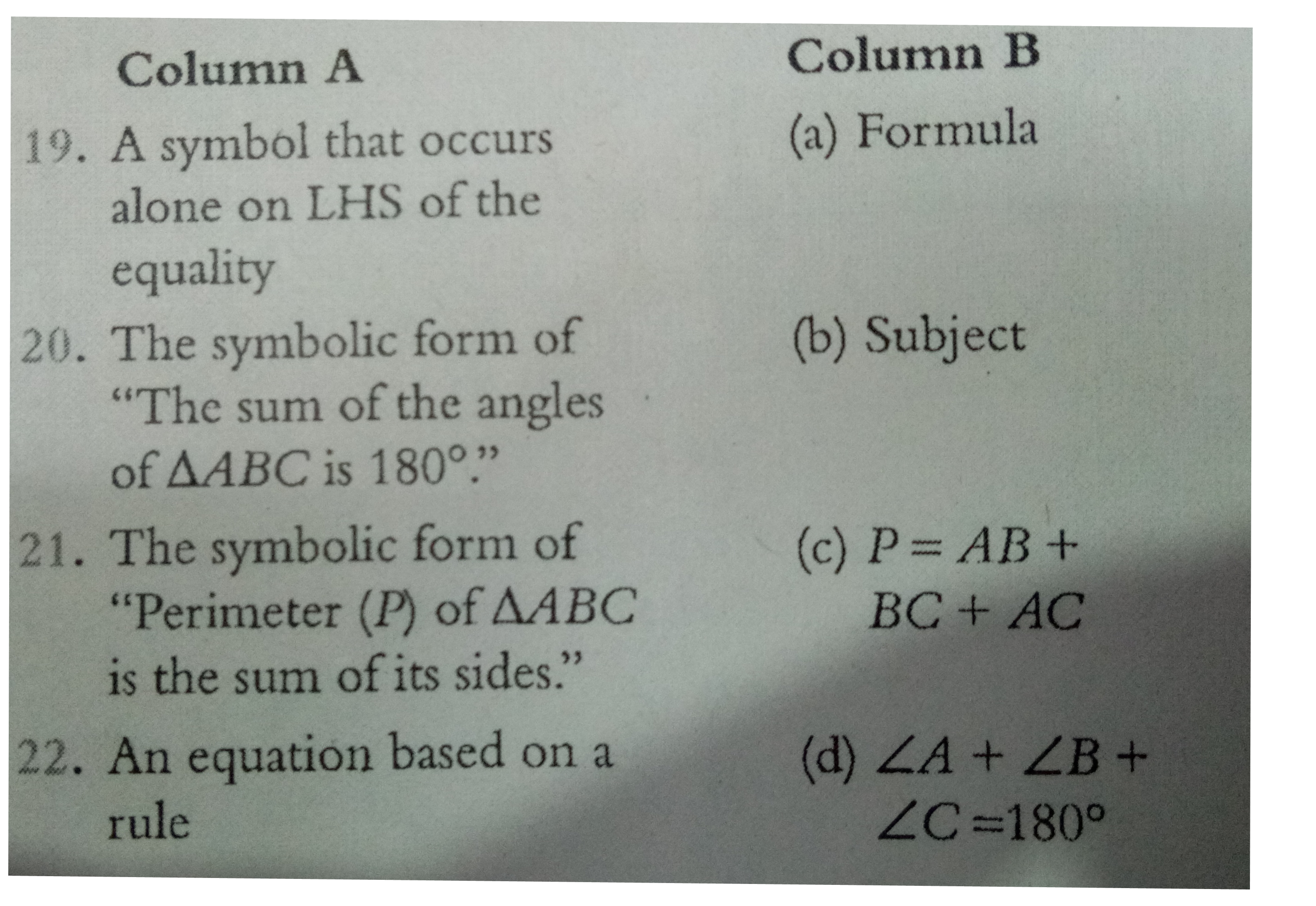
View SolutionMatch the following Column A to Column B
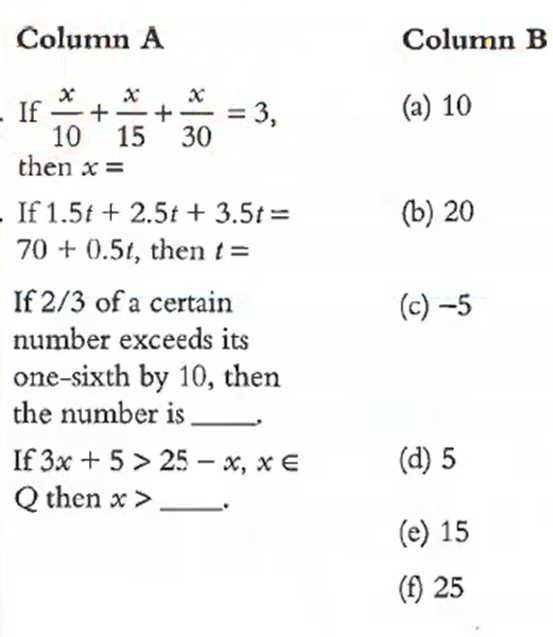
View SolutionFind the area of the figure given below.
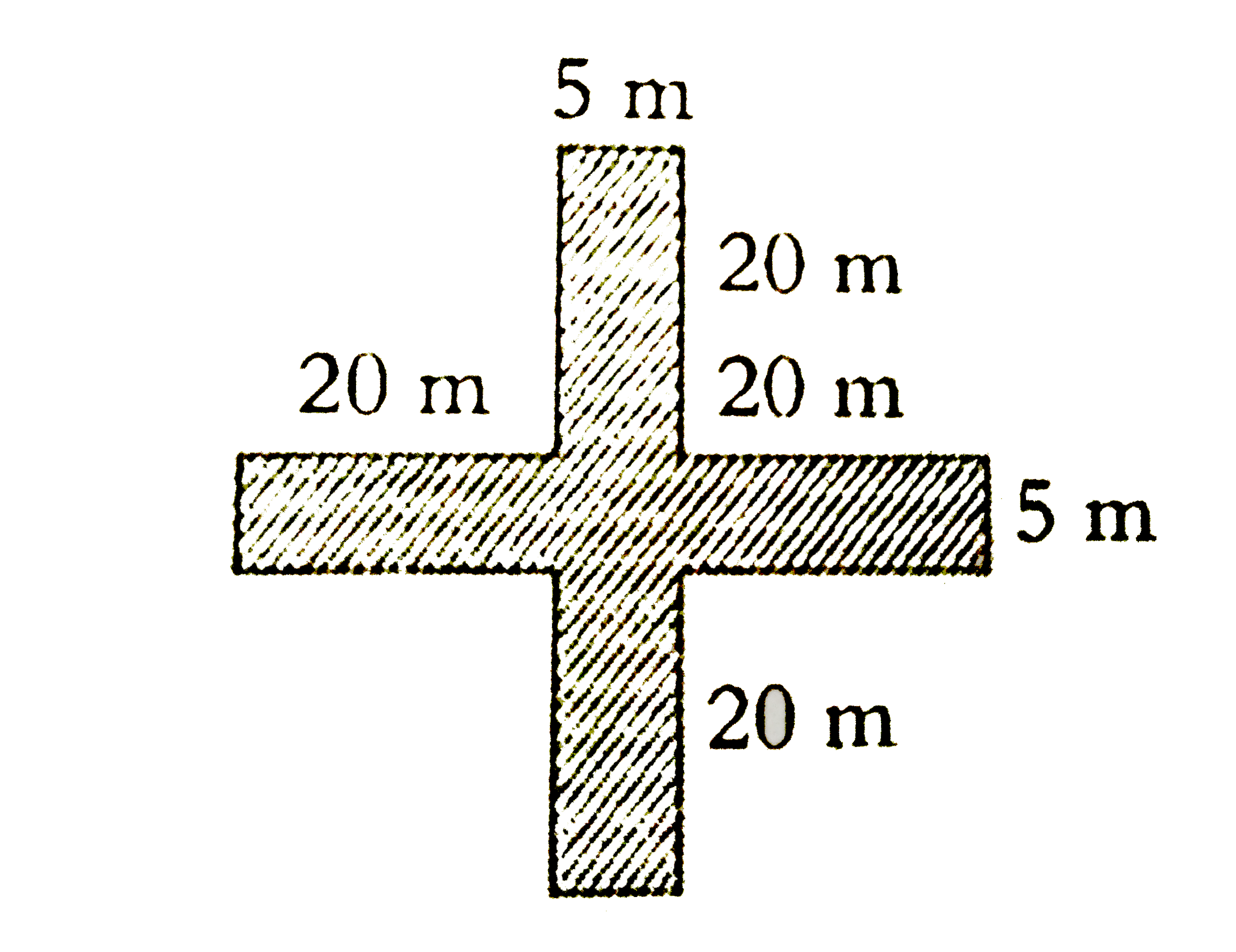
View SolutionThe area of the shaded part in the figure given below is ______.

View SolutionThe inequation represented by the graph given below is :
View SolutionThe inequation that best describes the graph given below is _________
View Solution
